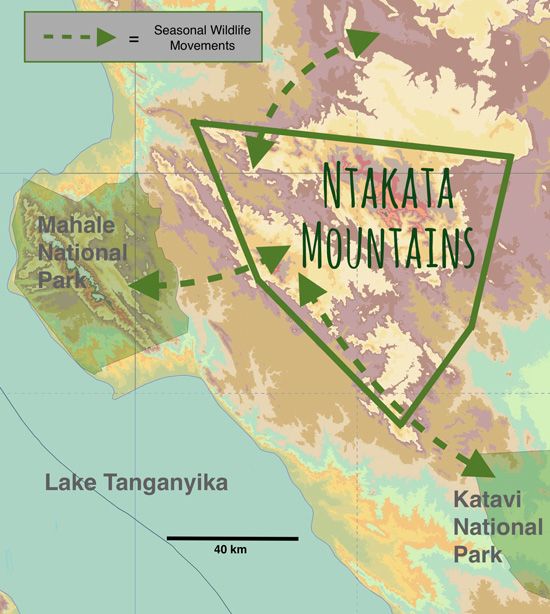Forest conservation in Tanzania
With our forest conservation project in the Ntakata Mountains in Tanzania, we offset our CO2 emissions. Why? Because the "Green" in our name is intentional. Protection of the climate and conservation of resources are very important to us, helping us to make the world a little better for you and your four-legged friends on a daily basis. And that's not all: we bind an additional 25% (i.e. one quarter) of the carbon dioxide that we generate. For us, this is climate positivity in practice - and we want to make sure you are as enthused about it as we are.
More than just CO2 offsetting
The forest conservation project is something that is truly close to our hearts, and we have intentionally put in a lot of work and invested a great deal of time in it. We have been committed to various sustainability projects since as far back as 2013. However, at the same time, we were looking for an initiative that we could support in the long term, which would meet all of our expectations. In Carbon Tanzania, we identified a forward-thinking initiative in East Africa with a focus on protecting resources. This project simply has it all: the project team is dedicated, the idea is fantastic and the manner in which the project is run suits us to a T.

Ntakata Mountains at a glance:
- 216,000 hectares of protected forest, this corresponds to the size of Saarland
- Eight communities with around 17,000 inhabitants
- Plenty of living space for the largest population of wild chimpanzees in East Africa and other partially threatened species
- 1,250,000 trees are protected from deforestation every year
Prohibited deforestation, excessively intensive livestock farming, mining and the construction of infrastructure, such as motorways, have done more than just alter the habitat of the indigenous peoples. 80 percent of lost woodland in Tanzania is generally attributed to unregulated and illegal agriculture. Preserving the forest has thus become a key task, and a point of focus for Carbon Tanzania.
The indigenous population have been brought along for the ride from the very outset, and benefit directly from emissions trading with us. In November 2018, a contract was concluded with all of these populations, which enables those working on the project and the populations themselves to put in place long-term financial planning. The forest conservation project itself is scheduled to run for a period of 30 years and offers a great deal of development potential. Climate protection is, of course, central. Huge quantities of CO2 are bound and a large amount of oxygen is produced in the forest. However, topics such as decreasing hunger and poverty, improving education and prospects for women are also addressed by the project and benefit from the new source of income.
We also have a strong focus on the animal world. Rare animal species, such as the forest elephants, live within the project region; East Africa's largest population of wild chimpanzees also roam there. The project region lies between several national parks and provides important migration corridors for the animals.
Living space for threatened species
Through the preservation of the forest, we can protect the living space of the largest population of wild chimpanzees in East Africa and other threatened species, such as forest elephants and more than 260 species of bird.
In harmony with nature
The indigenous tribes of the Bende, Tongwe and Ha have been taking care of the forest and their homeland for as long as anyone can remember. They have perfectly adapted their agricultural practices and livestock breeding to suit their environment
Forest conservation as a key task
The Ntakata Mountains belong to the tropical Miombo forest and are regarded as one of the last bastions of forest conservation in Tanzania.



